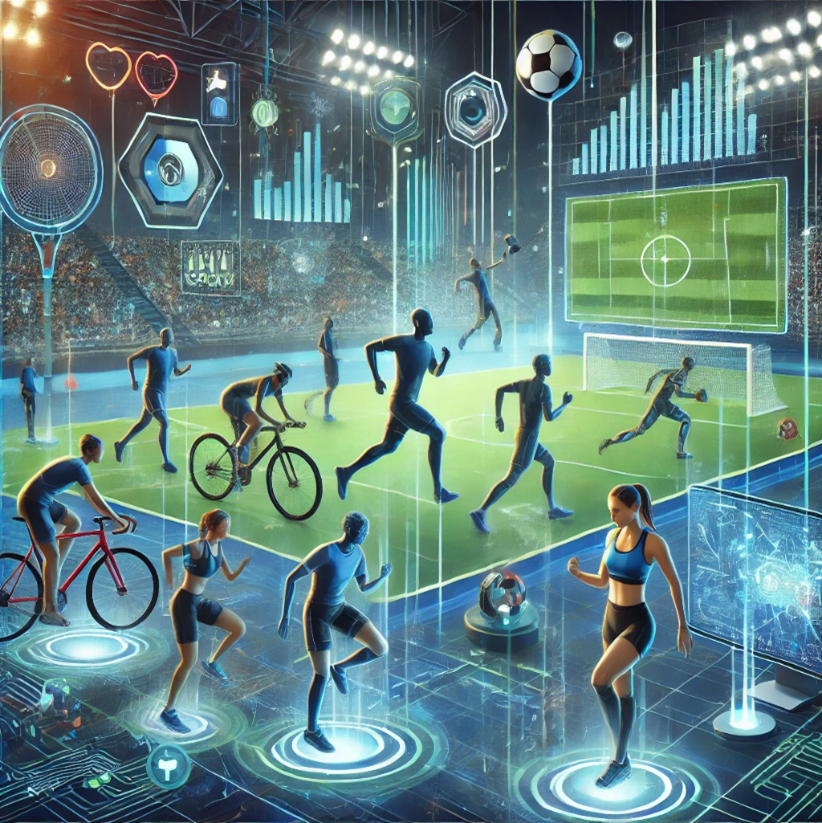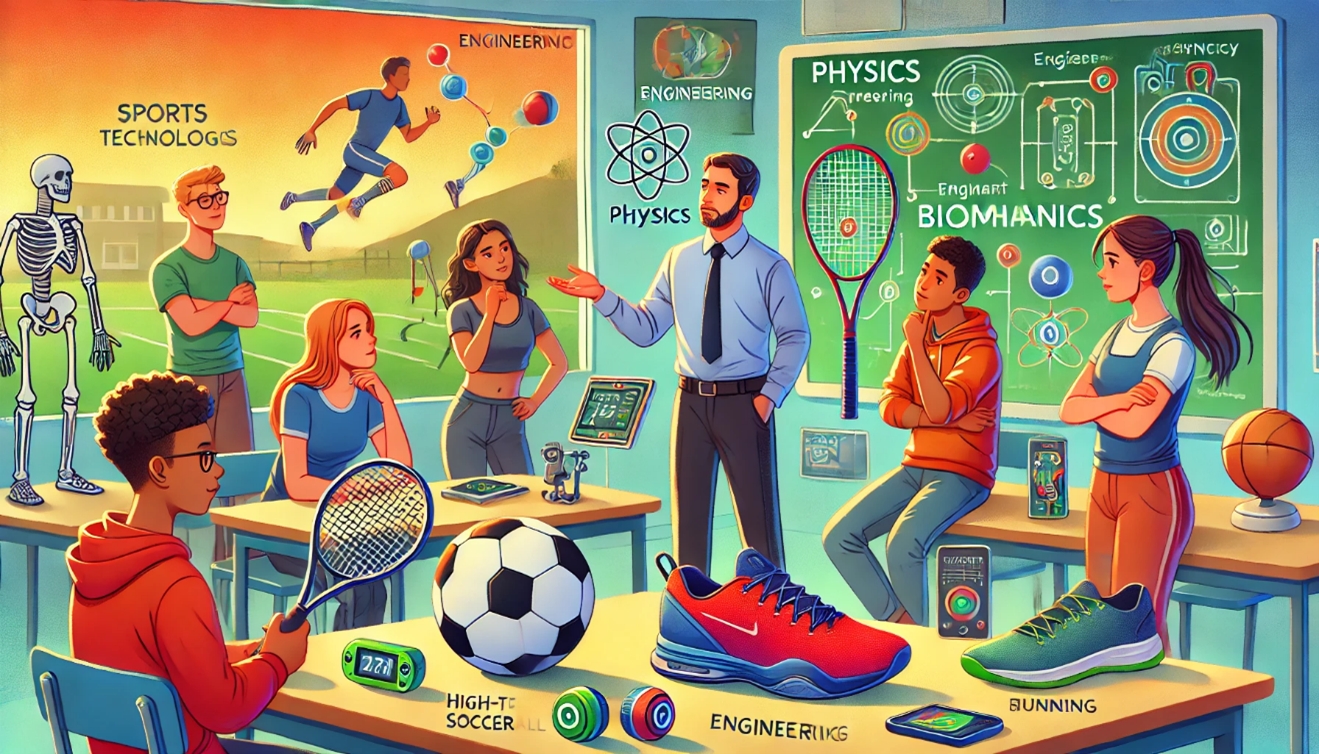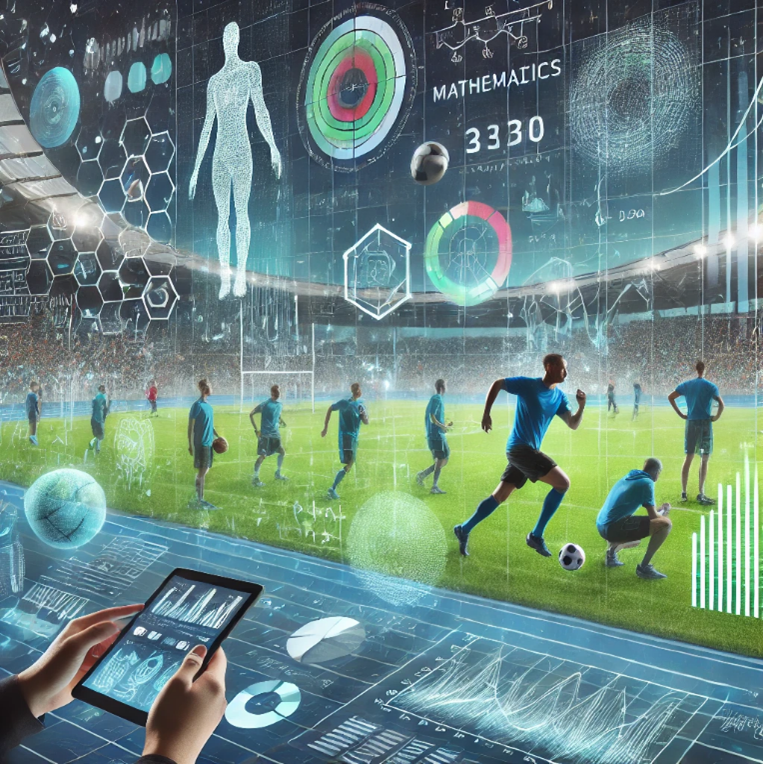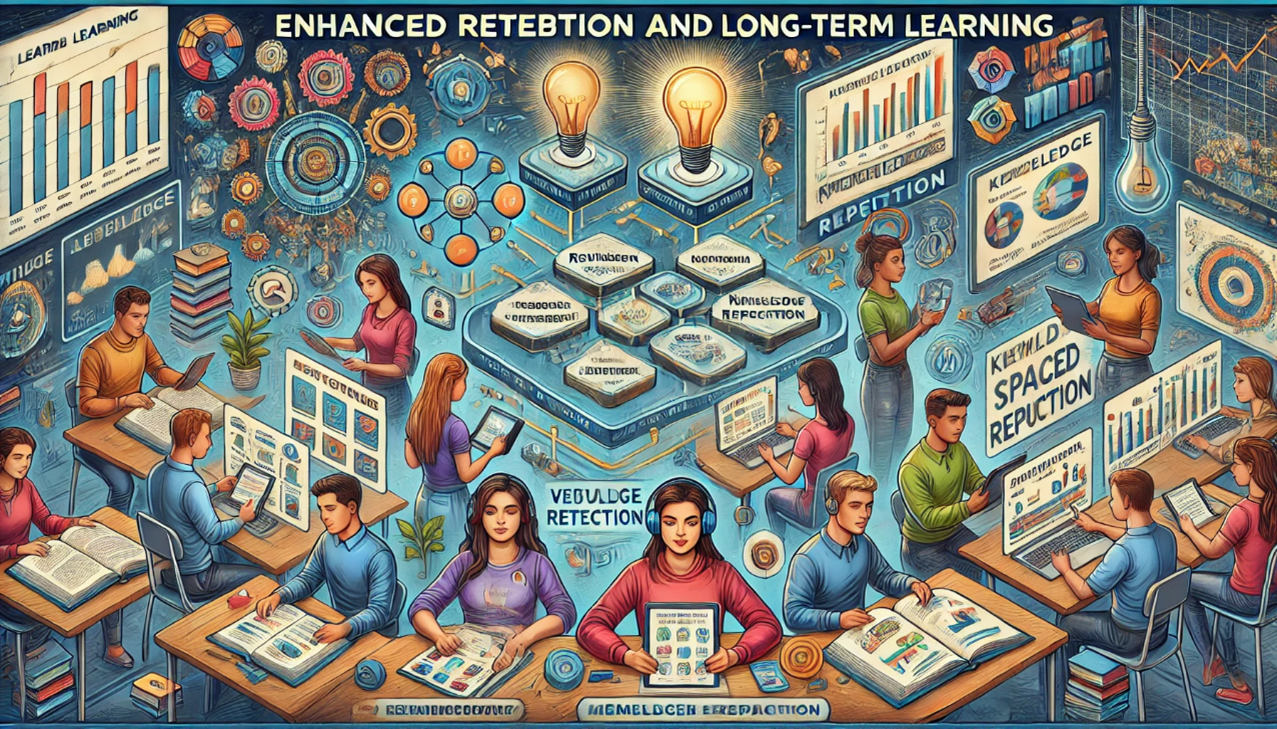Teaching STEM concepts by exploring the science behind sports technologies

Teaching STEM concepts by exploring the science behind sports technologies
by Nathaniel 03:39pm Jan 23, 2025

Teaching STEM concepts by exploring the science behind sports technologies
Teaching STEM (Science, Technology, Engineering, and Mathematics) concepts through the lens of sports technologies offers a highly engaging and practical way for students to connect classroom learning with real-world applications. Sports technologies are rich with scientific principles, engineering solutions, and mathematical models that can illuminate key concepts across various STEM disciplines. Here's how exploring the science behind sports technologies can effectively teach STEM concepts:
1. Physics in Sports Technologies
Motion and Force:Sports technologies like smart basketballs, soccer sensors,and golf tracking systems often measure the force, speed, and trajectory of the ball. By studying how these devices work, students can explore concepts of Newton's Laws of Motion, projectile motion, and force and momentum.
Example: A sensor in a golf club measures the speed of the club's swing and the angle at which it strikes the ball. Students can calculate the impact of different forces on the ball’s flight path, and understand concepts like velocity, acceleration, and friction in action.
Learning Focus:Physics of motion, velocity, acceleration, angular momentum, energy conservation.
Biomechanics:Wearable devices like smart clothing, fitness trackers, and exoskeletons rely on sensors that measure movement and muscle activity. These technologies can help students understand human biomechanics the science of movement, muscle function, and body mechanics.
Example:Using a motion capture system in a sports context can teach students about joint angles, torque, and force vectors.
Learning Focus:Muscle movement, leverage, body mechanics, angular velocity, torque, and stress on joints.
2. Engineering in Sports Technologies
Designing Equipment:Sports technologies, such as smart helmets, wearable performance trackers, and athletic shoes with sensors, involve complex engineering processes. Students can learn how engineers design sports equipment with the goal of maximizing performance and minimizing injury risks.
Example:The design of helmets for various sports like football or cycling teaches students about material science and impact resistance.Engineering concepts such as structural integrity, shock absorption, and safety standards come into play.
Learning Focus:Materials engineering, force distribution, shock absorption, design principles, ergonomics.
Data Collection and Analysis Tools: Sports technologies often involve collecting large amounts of data through sensors or cameras (e.g., video analysis software or motion sensors). Students can explore the design of these tools and learn how engineers integrate data processing and signal transmission to extract meaningful insights.
Example:Using data from smartwatches or smart shoes to analyze a runner's gait or stride can teach students about the integration of hardware and software in sports technologies.
Learning Focus:Signal processing, data analysis, sensor technology, embedded systems.
3. Mathematics in Sports Technologies
Statistics and Performance Analysis: Many sports technologies provide performance statistics, such as heart rate, speed, reaction time, or calories burned.These data sets provide opportunities for students to apply statistical analysis and data visualization techniques.
Example: Analyzing heart rate variability before, during, and after a workout using data from a smart fitness tracker introduces students to concepts of data modeling, mean/median/standard deviation, and trend analysis.
Learning Focus:Descriptive statistics, data analysis, probability, regression analysis.
Optimization Problems: In sports like cycling, running, or swimming,technologies such as GPS trackers or performance algorithms can help athletes optimize their routes, speeds, or training schedules. Students can apply mathematical models to solve real-world optimization problems.
Example:Using a smart cycling app to analyze speed and route efficiency teaches students about optimization algorithms and how to find the best solution based on given constraints (e.g., distance, time,elevation).
Learning Focus: Optimization, algorithmic thinking, problem-solving using mathematical models.
4. Technology and Innovations in Sports
Wearable Technology:Devices like smartwatches and fitness trackers that monitor heart rate, activity levels, and sleep patterns provide real-world examples of how Internet of Things (IoT) technology is used to collect data and deliver insights. Students can explore wireless communication, data transmission, and how sensors work to collect data from the body.
Example:A smart soccer ball equipped with sensors to track spin, speed,and trajectory provides a hands-on way to explore sensor technologies, signal processing, and wireless data transmission.
Learning Focus:IoT, wireless communication, sensor networks, data transmission.
Artificial Intelligence (AI) and Machine Learning (ML): Many sports technologies use AI and ML algorithms to track performance, predict outcomes, and offer personalized training recommendations. Students can explore how AI-based algorithms work to analyze athletic performance and offer insights.
Example:AI-driven tennis training systems that use computer vision to analyze a player's technique and suggest improvements teach students about machine learning, image recognition, and pattern recognition.
Learning Focus:Machine learning, artificial intelligence, pattern recognition, algorithm development.
5. Real-World Applications and Case Studies
Smart Sports Equipment: Many modern sports equipment pieces, like smart basketballs or soccer sensors, are embedded with technology to track performance and improve athletic techniques. For example, a smart basketball uses sensors to track the spin and trajectory of the ball,providing feedback to improve shooting accuracy.
Learning Focus:Physics (spin, angle, velocity), engineering (sensor integration), math (data collection and analysis).
VR and AR in Sports Training: Virtual and augmented reality (VR/AR) technologies are increasingly being used in sports to simulate game scenarios, provide immersive training experiences, and improve decision-making skills. These tools rely on complex simulations, computer vision, and real-time processing.
Example:VR training systems for athletes in sports like basketball or soccer, where players practice reaction time and decision-making, expose students to the principles of virtual environments, simulation modeling, and real-time computing.
Learning Focus:Simulation modeling, computer graphics, real-time processing, decision-making algorithms.
6. STEM Activities and Projects for Students
Building a Sports Tracker: Students can design and build a simple sports performance tracker using sensors, such as an accelerometer or gyroscope, to measure speed or distance. This activity will expose them to sensor technology, circuit design, and programming.
Analyzing Performance: Students can use motion analysis software or video analysis tools to study the techniques of famous athletes in sports like track and field, swimming, or gymnastics. By applying principles of kinematics and physics, they can learn about forces, momentum, and trajectory analysis.
Conclusion
Exploring the science behind sports technologies is an exciting and engaging way to teach STEM concepts. By linking theory to real-world applications, students gain a deeper understanding of how STEM principles are integrated into technologies they can relate to. Whether through understanding the physics of motion, engineering wearable devices, or analyzing performance data with math, students see firsthand how STEM subjects are critical to innovation in the sports world. This approach not only enhances their understanding of STEM but also fosters skills like critical thinking, problem-solving, and creativity.






